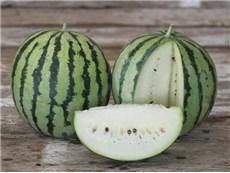
 18
18






Outdoor and Ecological articles (sporadic Mondays) at http://blog.dxlogan.com/ and my main site is found at http://www.dxlogan.com/

 20
20




 10
10




Joseph Lofthouse wrote:A watermelon that turns yellow when ripe.
Joseph Lofthouse wrote:Nitrogen fixing corn.
Outdoor and Ecological articles (sporadic Mondays) at http://blog.dxlogan.com/ and my main site is found at http://www.dxlogan.com/
 3
3




Outdoor and Ecological articles (sporadic Mondays) at http://blog.dxlogan.com/ and my main site is found at http://www.dxlogan.com/
 23
23




 14
14




Permaculture...picking the lock back to Eden since 1978.
Pics of my Forest Garden

 14
14




 6
6




Eino Kenttä wrote:On the more far-fetched side, I've been fantasizing about turning Tilia sp. (basswood/linden) into a nut tree. Theoretically it should be possible, given that they have oily seeds of a decent size that aren't toxic (at least not that I'm aware), but I suppose it would take quite some time.
Outdoor and Ecological articles (sporadic Mondays) at http://blog.dxlogan.com/ and my main site is found at http://www.dxlogan.com/

 9
9




 15
15




“The most important decision we make is whether we believe we live in a friendly or hostile universe.”― Albert Einstein
 7
7




 8
8




 4
4




 3
3




Garrett Schantz wrote:Hybrids between Blitum bonus-henricus, Blitum capitatum and of course Spinacia oleracea would be amazing. Perennial spinach along with edible shoots...
“The most important decision we make is whether we believe we live in a friendly or hostile universe.”― Albert Einstein




John Weiland wrote:
Garrett Schantz wrote:Hybrids between Blitum bonus-henricus, Blitum capitatum and of course Spinacia oleracea would be amazing. Perennial spinach along with edible shoots...
Are bonus-henricus or capitatum perennial through cold climate winters?......Hardy to -30C? I assumed they were annuals with hardy overwintering seed. This would be interesting!
 5
5




In the south when the wind gets to 75 mph they give it a name and call it a hurricane. Here we call it a mite windy...
 4
4




Dorothy Pohorelow wrote:The vision is plants that can "poach" the heat and light you are already using for your comfort to produce tasty and healthy food in your own house.
Permaculture...picking the lock back to Eden since 1978.
Pics of my Forest Garden
 5
5




Greg Martin wrote:
Dorothy Pohorelow wrote:The vision is plants that can "poach" the heat and light you are already using for your comfort to produce tasty and healthy food in your own house.
Right on Dorothy!!! All our indoor winter lights can totally have food growing under them!
Why the heck not....love imagining what lighting should look like designed with plants as an intended part of the fixtures, and what a home would look like drenched in light feeding the plants that feed the inhabitants.
Stack those functions! Live luxuriantly while also being extra efficient. I love that you are thinking this way too.
In the south when the wind gets to 75 mph they give it a name and call it a hurricane. Here we call it a mite windy...
 6
6




 7
7




Little house with a big garden in the city!
"It is no measure of health to be well adjusted to a profoundly sick society." ~ J. Krishnamurti
 5
5




John Weiland wrote:I'd like to cross Canada Thistle with Artichokes and have them take over my pasture like the thistle does.
If quinoa would cross with my garden lambsquarter and still retain the nutritional and caloric value of the former, it would not even require seeding in the spring.
"Baseball"-sized brussel sprouts from which you could pick the sprouts in the fall, leaves throughout the winter and it would then produce a broccoli head in the spring.....
If we're getting close to putting humans on Mars, is this too much to ask?? :-)




Jenny Wright wrote:In that vein, how about lady's thumb with a seed as big as buckwheat. The lady's thumb did much better than the buckwheat I planted.
Little house with a big garden in the city!
"It is no measure of health to be well adjusted to a profoundly sick society." ~ J. Krishnamurti
 2
2




C Lundquist wrote:
Jenny Wright wrote:In that vein, how about lady's thumb with a seed as big as buckwheat. The lady's thumb did much better than the buckwheat I planted.
Can you eat lady's thumb seeds? I always cultivate a patch because they make a vibrant colorfast golden dye, but I haven't thought about eating the seeds.
 2
2




C Lundquist wrote:
Can you eat lady's thumb seeds? I always cultivate a patch because they make a vibrant colorfast golden dye, but I haven't thought about eating the seeds.
 4
4




Forever oscillating between wondering how I can fit everything I want to grow into my tiny urban garden (hahaha I can’t) and how to make enough money to buy my dream mini farm where I can grow everything I want to grow, raise chickens and be a haven for my local pollinators and wildflower species 😁🌱🌻

 3
3




 2
2




Observation is where intelligence is born.
 2
2




 1
1




Little house with a big garden in the city!
"It is no measure of health to be well adjusted to a profoundly sick society." ~ J. Krishnamurti
 1
1




 3
3




 2
2








Garrett Schantz wrote:Mitchella repens x Diodia virginiana - eventually moving into Coffea hybrid groups and making a cold hardy perennial coffee.]
Oh cold hardy coffee, yes! I volunteer to grow it all out.
 1
1




 5
5




 1
1




Bethany Brown wrote:Thought of a new one today- making dock more palatable/edible. Chickens seem to like the leaves and seeds. I haven’t tried eating it, and have heard it can be toxic if you eat much. Of course. How much is too much? How could we decrease the amount of toxic compounds? It seems like potential for a great multiuse crop- leaves, roots, and seeds.




Daniel Sillito wrote:
Bethany Brown wrote:Thought of a new one today- making dock more palatable/edible. Chickens seem to like the leaves and seeds. I haven’t tried eating it, and have heard it can be toxic if you eat much. Of course. How much is too much? How could we decrease the amount of toxic compounds? It seems like potential for a great multiuse crop- leaves, roots, and seeds.
As far as I know the only toxic compound worth noting in Dock is oxalates. A low oxalate variety would be worth breeding for. The seeds are pleasant enough, though a bit fiddly. The book "Wild Wisdom of Weeds" has a whole chapter on the plant and its uses, though even the author notes that dock is only good for greens while very young and small.
 2
2




Bethany Brown wrote:
I will keep it in my idea bank. I wouldn’t know where to begin, but maybe someday I will.
Permaculture...picking the lock back to Eden since 1978.
Pics of my Forest Garden
 4
4





 4
4










